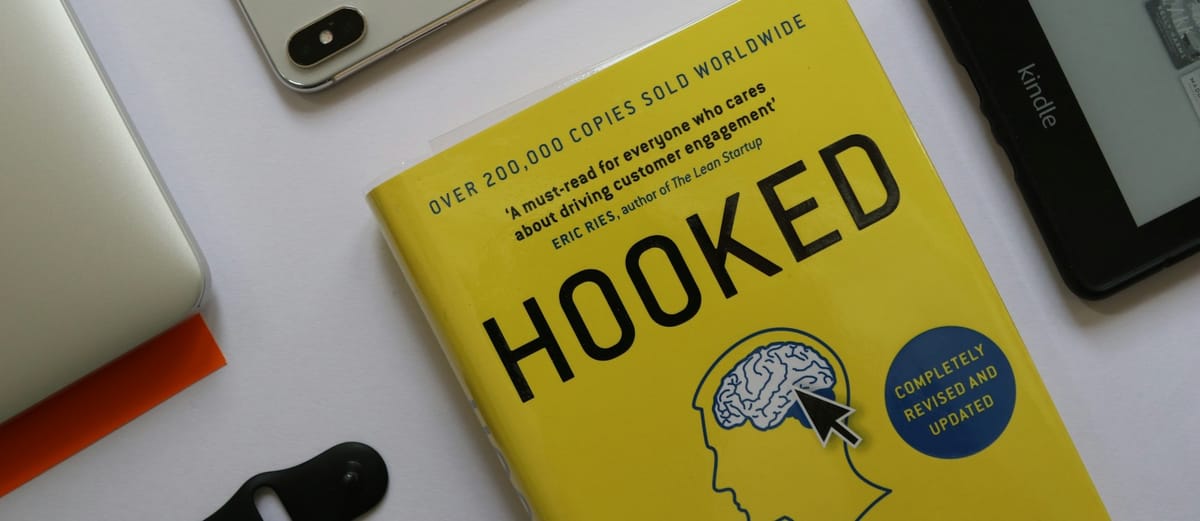Hooked on the screen: How internet porn affects the brain

Are you also curious about how internet pornography affects brain function, emotion, and behavior? Is it true that excessive use mirrors drug addiction and impacts cognitive control and mood?
With the spread of internet access and changes in how we socialize, internet pornography has become widely available and frequently consumed. People began watching pornography more often and for longer periods.
This rise in use sparked concerns about the effects on the brain. Some people reported withdrawal-like symptoms—such as irritability, anxiety, and low mood—when they tried to stop.
These symptoms resemble those seen in drug addiction, raising questions about whether frequent pornography use can cause similar changes in the brain’s reward system.
Well, this research team went all in - and put a bunch of students in an advanced brain scanner - and measured their brain acticity while watching porn. The result is super interesting.
But first a bit about porn and the brains reward system
One of the brain’s key players in reward and motivation is dopamine. Pornography is known to trigger a strong release of dopamine, which makes people crave more.
Dopamine is a chemical messenger that helps the brain send signals related to reward, motivation, and pleasure. It gets released when we experience something enjoyable, like good food, social connection, or success. This release helps reinforce the behavior, making us more likely to seek out similar experiences again.
Dopamine is also central to the brain’s response to sexual stimulation. It helps create feelings of desire, excitement, and reward during sexual activity. When sexual cues are present, dopamine levels rise in brain areas linked to pleasure and motivation.
High dopamine activity can increase sexual drive, while low levels may reduce interest in sex or pleasure. With high dopamine activity, over time, the brain can start depending on this stimulus, potentially changing how it responds to pleasure and control.
Previous research has shown that internet pornography use might impact brain structure and function in ways similar to substance use disorders, but the precise mechanisms remain unclear.
When is it addition, and when is it just for fun?
Estimates of how many people struggle with problematic pornography use vary, but research suggests that 2% to 8% of adults, particularly young men, may be affected. So, if 95% of the worlds adult population have done or do watch porn (yes, its normal) then 92-98% watch porn as a natural part of life - thats important to stress as well.
Internet pornography addiction is not formally recognized as a distinct disorder in major diagnostic systems. However, it is increasingly being examined within the framework of compulsive sexual behavior disorder, which is classified as an impulse control disorder.
Problematic use is typically marked by loss of control, strong cravings, withdrawal-like symptoms, and continued use despite negative consequences.
While there is no clear boundary between normal and addictive use, signs of a problem include using pornography more often or longer than planned, being unable to stop, and using it to manage stress or emotions.
Over time, increasing tolerance and negative impacts on relationships or daily life may also emerge. Researchers rely on screening tools like the Problematic Pornography Use Scale to help identify individuals who may need support.
Studying the pornified brain in real time
In this study, researchers used fNIRS scans to measure brain responses while participants watched a ten-minute pornographic video. They also assessed their facial expressions, vital signs like heart rate and blood pressure. The participant's performance on a mental task test, which evaluates attention and self-control, was measured before and after watching the video.
The participants included two groups of college students. One group watched pornography only occasionally. The other group showed signs of problematic use based on a questionnaire designed to assess addiction-like behavior.
All participants were healthy, heterosexual, and right-handed, and they refrained from masturbation during the experiment to avoid confounding effects.
What the brain scan revealed
The brain activity results showed clear differences between the two groups.
Those who rarely watched pornography had stronger connections in brain areas involved in movement, touch, and visual processing. In contrast, the high-use group showed more activity in brain areas related to planning, decision-making, and emotional regulation, specifically in the prefrontal cortex, which is heavily involved in impulse control and executive function.
This heightened prefrontal activity is striking because it mirrors patterns seen in drug addiction. When people take drugs like opioids, brain areas involved in rewards, emotions, and memory become more tightly linked. These same regions (the amygdala, hippocampus, and prefrontal cortex) were more active in participants who frequently watched pornography.
A hypothesis is that the brain’s reward system, normally activated by natural pleasures, may start to prioritize artificial stimuli like pornography. This can alter behavior, making it harder to stop even when someone wants to.
Interestingly, the way these brain areas were connected in heavy users looked similar not only to patterns in drug addiction but also to those found in certain psychiatric conditions, such as schizophrenia. The study suggests that watching pornography excessively may lead to overactivation of specific networks, which could disrupt emotional balance and cognitive control. That gives food for thought.
The body and emotions also respond.
Beyond the brain, the researchers observed notable differences in physiological responses.
Participants who watched pornography more often showed lower heart rates during the session. Their facial expressions showed more signs of pleasure and emotional engagement, but also more sadness, anger, and emotionally flat or vacant expressions. These mixed signals suggest deeper emotional involvement and possibly emotional blunting in frequent viewers.
In terms of mental performance, the test revealed a drop in attention and accuracy immediately after viewing pornography. These findings suggest that pornography use might temporarily disrupt thinking and concentration (which is not that surprising) and impair short-term cognitive function.
Questionnaire data also supported this. The high-use group had higher levels of anxiety and depression. This aligns with earlier research suggesting that people who consume pornography frequently may do so in response to stress or emotional discomfort, though the behavior can in turn worsen mental health.
The idea that pornography might function like a self-soothing mechanism for stress, while also reinforcing negative mood cycles, is gaining support in some scientific discussions.
What this means for treatment off internet porn addition
This study adds to a growing body of evidence suggesting that internet pornography can alter how the brain processes reward and emotion.
The fact that these changes resemble those seen in substance use disorders is especially important. It may help explain why some people struggle to reduce or stop their use, even when they experience negative effects in their lives.
Treatment for problematic pornography use often starts with psychological therapy. One promising method is acceptance and commitment therapy, which helps individuals recognize and manage their urges without acting on them. In more severe cases, doctors may use medications that reduce sexual desire or compulsive behavior, such as certain hormone-based treatments or serotonin-boosting drugs.
The study also raises the question of whether medications used in drug addiction, like naltrexone, could be helpful in extreme cases of pornography dependence, though this remains controversial.
The researchers stress that the patterns of brain activity seen in frequent pornography users show excessive connectivity. While a certain amount of neural communication supports healthy thinking and decision-making, too much may lead to "overload".
This may explain the impaired mental performance and emotional swings observed in the high-use group. A balanced brain needs both stimulation and rest, and overstimulating the brain’s pleasure system might tip this balance.
Pssst - remember to subscribe to our free newsletter!
About the paper that inspired:
First Author: Jiahuan Feng, China
Published: Frontiers in Human Neuroscience, April 2025
Link to paper: https://www.frontiersin.org/journals/human-neuroscience/articles/10.3389/fnhum.2025.1477914/full




Comments ()